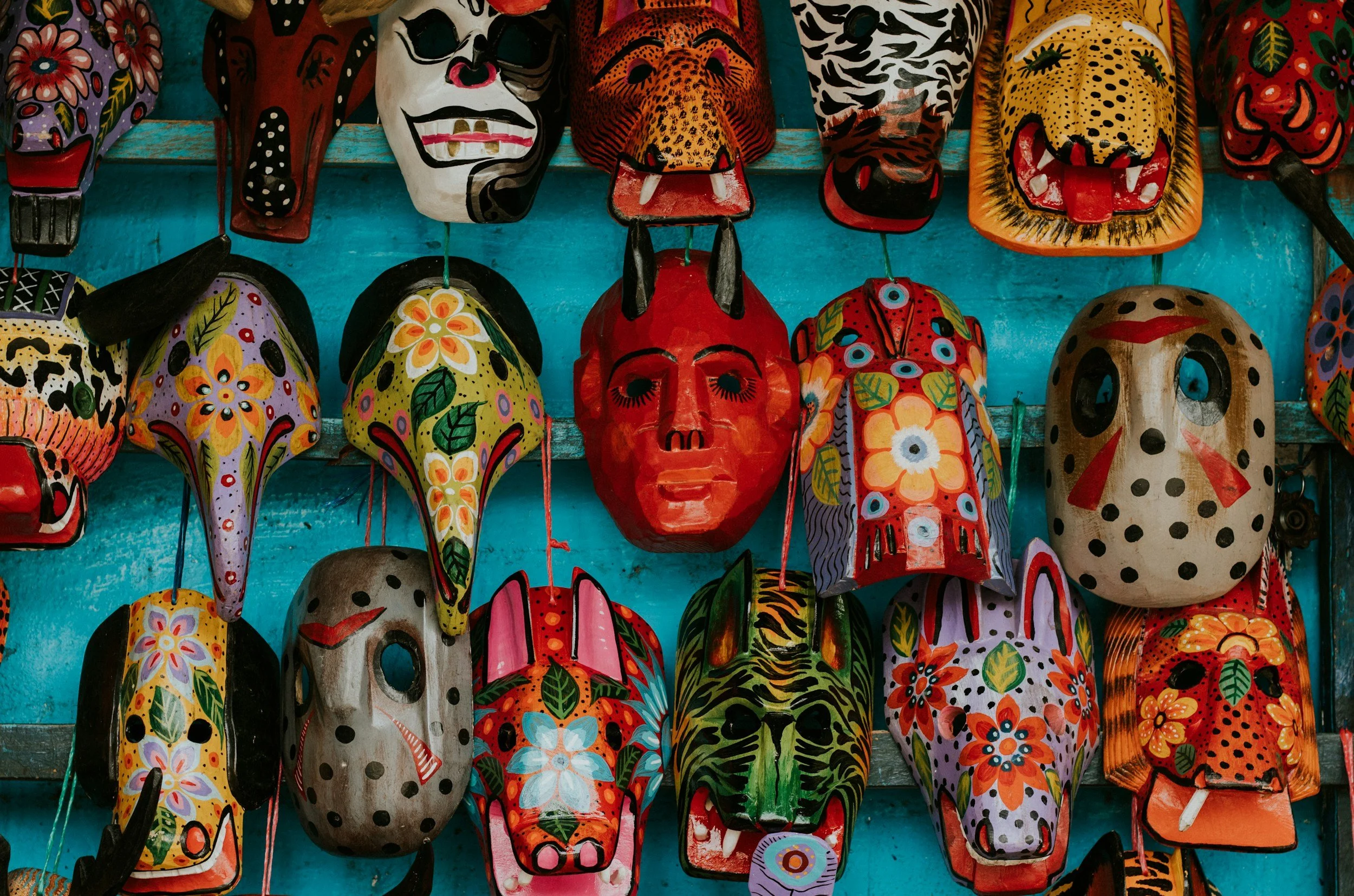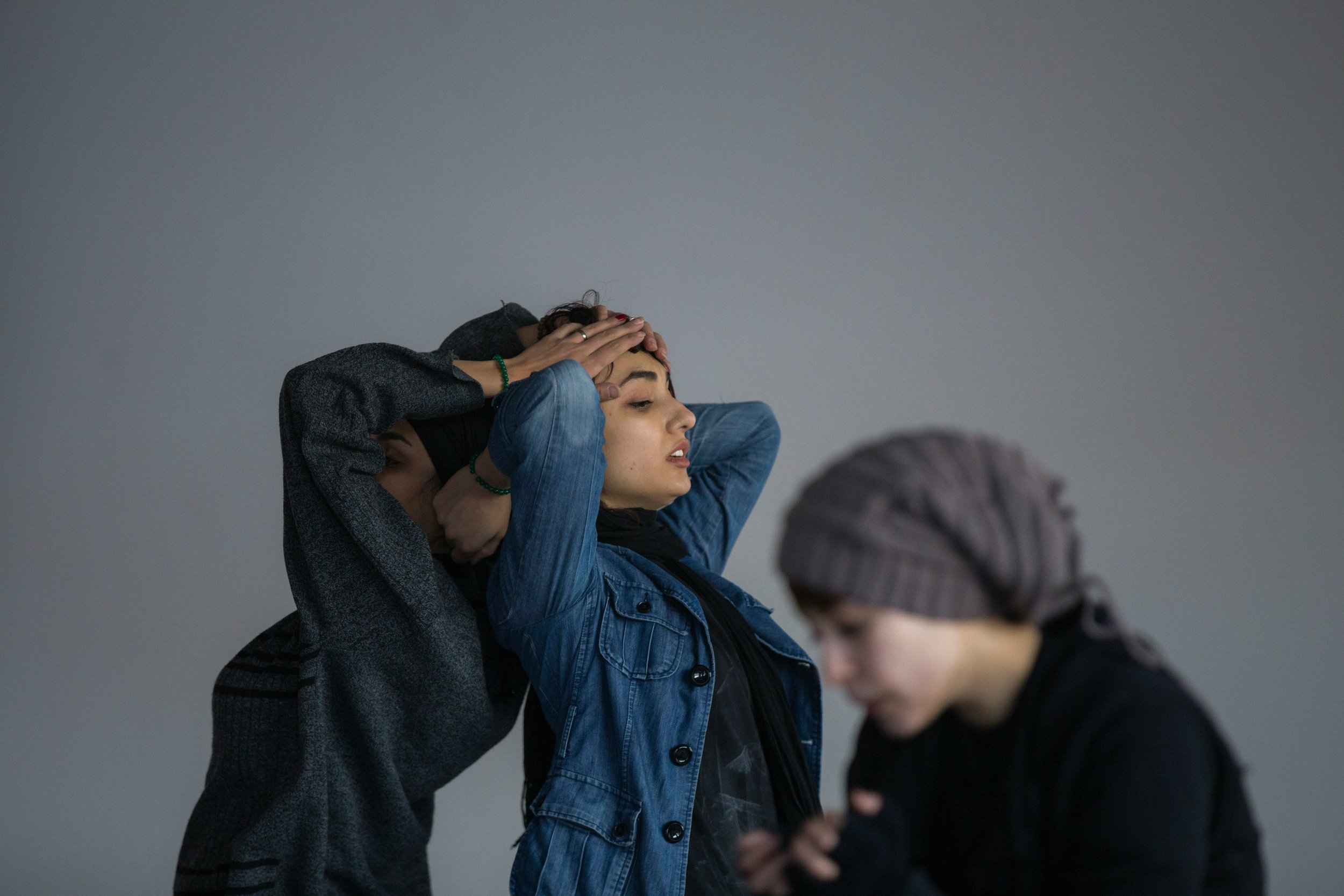Unmasking
Ferrando Elias - Unsplash
When the Masks Come Off: Family Roles, Gratitude, and the Work of Being Seen
If October was about noticing, November is about revealing. Halloween ends, the costumes go back in their boxes, and suddenly the world turns toward gratitude. But for many of us, the hardest mask to take off isn’t the one from the party — it’s the one we’ve worn for years.
The smile that keeps peace.
The calm voice that hides chaos.
The full schedule that leaves no space for feeling.
Those masks helped us get through the fall (the busy transitions, the expectations, the pace).
But November asks for something else.
It’s the season of taking stock, of letting the light hit what’s real, and sharing it with the people who have earned the right to see it.
Jim Luo - Unsplash
The Masks We Inherit
Every family has its rules:
Don’t talk about it.
Be strong.
Keep it together.
Make it look good.
Those rules quietly become roles — the helper, the achiever, the easy one, the one who never cries. Whether you grew up Upstate or on Long Island, you learned which emotions were acceptable and which ones stayed hidden.
From the outside, people think they know New York: loud, confident, always moving.
Drive north and you’ll find a different kind of armor: quiet strength, privacy, endurance.
Head downstate and the volume rises: humor, hustle, polish, a little “everything’s fine” disguised as a punchline.
Upstate might call it dramatic.
Long Islanders might call it just being honest.
Both are right.
Each region wears its own version of strength shaped by landscape, history, and the same unspoken rule: show control, not cracks. Underneath it all sits the same current of stress, anxiety, and trauma: the pressure to keep performing even when the body’s begging for rest.
Different styles, same story: we all wear the masks that keep us accepted in where we come from.
Anthony Lim - Unsplash
How Family Roles Become Patterns
Those roles don’t end in childhood. They travel with us into relationships, careers, and parenting. We keep saving, pleasing, controlling, or disappearing. We replay the same triangle of rescuer, victim, persecutor again and again.
Reenactment isn’t logic; it’s loyalty.
It’s love repeating itself the only way it knows how.
The body whispers, This is how safety used to look.
People often arrive in therapy not realizing that burnout, irritability, sleepless nights, and overthinking are old survival patterns showing up as stress and anxiety. What once kept us connected now keeps us stuck. It’s not weakness — it’s wiring. And wiring can change.
When the Role Becomes Too Tight
Eventually the role stops fitting.
The laughter feels rehearsed.
The calm feels hollow.
The giving starts to drain instead of connect.
We wonder, Who am I if I stop performing the version everyone expects?
That moment — the disorientation, the relief, the fear — that’s the beginning of healing.
It’s not collapse; it’s clarity.
It’s the first real breath after years of holding it.
How the Arts Help Us Unmask
Creative arts therapy gives shape to what words often can’t.
Art therapy externalizes what the body holds into color, texture, space. It shows the truth without explanation.
Drama therapy lets us safely step into and out of our roles, to feel where the tension lives and imagine what freedom could sound like.
Dance/movement therapy reminds us that release starts with awareness. We notice a clenched jaw, a shallow breath, a shoulder that finally drops.
Music therapy steadies rhythm and breath, translating emotion into vibration.
Writing therapy catches the looping thoughts, the “what-ifs,” and turns them into story instead of noise.
None of it is about performance. It’s about integration. It’s about letting the polished parts of us and the rawness of pain and unprocessed emotions sit in the same room. That’s when something shifts.
The body exhales. The self begins to feel like one piece again.
Finding Gratitude for What’s Real
This season isn’t just about lists of blessings. It’s about gratitude for the parts of us that survived. Maybe those parts are strong, cautious, funny, and stubborn. IFS helps us meet the parts inside — the caretaker, the joker, the avoider — and thank them for working so hard.
Healing from stress and trauma often starts here. It is not “fixing”, but with noticing what’s still alive inside you. Gratitude becomes regulation. It’s the quiet knowing that you made it. We at START are so crateful for the people who sit beside all of these parts of themselves without turning away.
True gratitude isn’t polite. It’s grounded. It’s what happens when you stop earning your place and realize you already belong.
Letting Our Village See Us
We all need a village. We need a group of people who can hold the unmasked version without flinching or fleeing.
That kind of safety builds slowly, through honesty, shared mess, and laughter that doesn’t need an explanation.
It’s the friend who doesn’t rush to fix.
The partner who says, “I’ve got you.”
The therapist who holds your story until you can carry it again.
Therapy can be that starting point — a space where every version of you is welcome. At START: Creative Arts Therapy Services, we help kids, teens, and adults reconnect through trauma-informed creative arts therapy for stress, anxiety, and relationship patterns. Art, movement, music, drama, and writing help reveal what’s underneath the mask and remind you that the parts you hid were never broken, just waiting for space.
Learn more or schedule a session at www.startcreativearts.com.
Try This
As November unfolds and the world asks what you’re thankful for, try this:
Thank the part that kept you safe.
Thank the mask that worked until it didn’t.
Thank the version of you that’s ready to rest.
And thank the people who let you show up unedited.
Healing isn’t just about taking off the mask. It’s about finding the people and the places that make it safe to stay unmasked.









